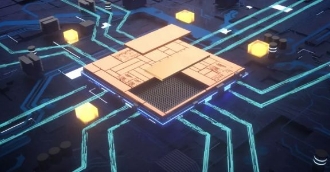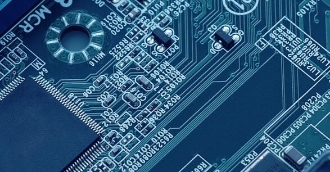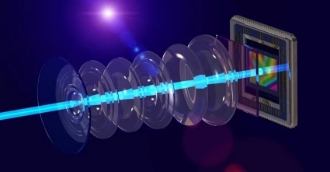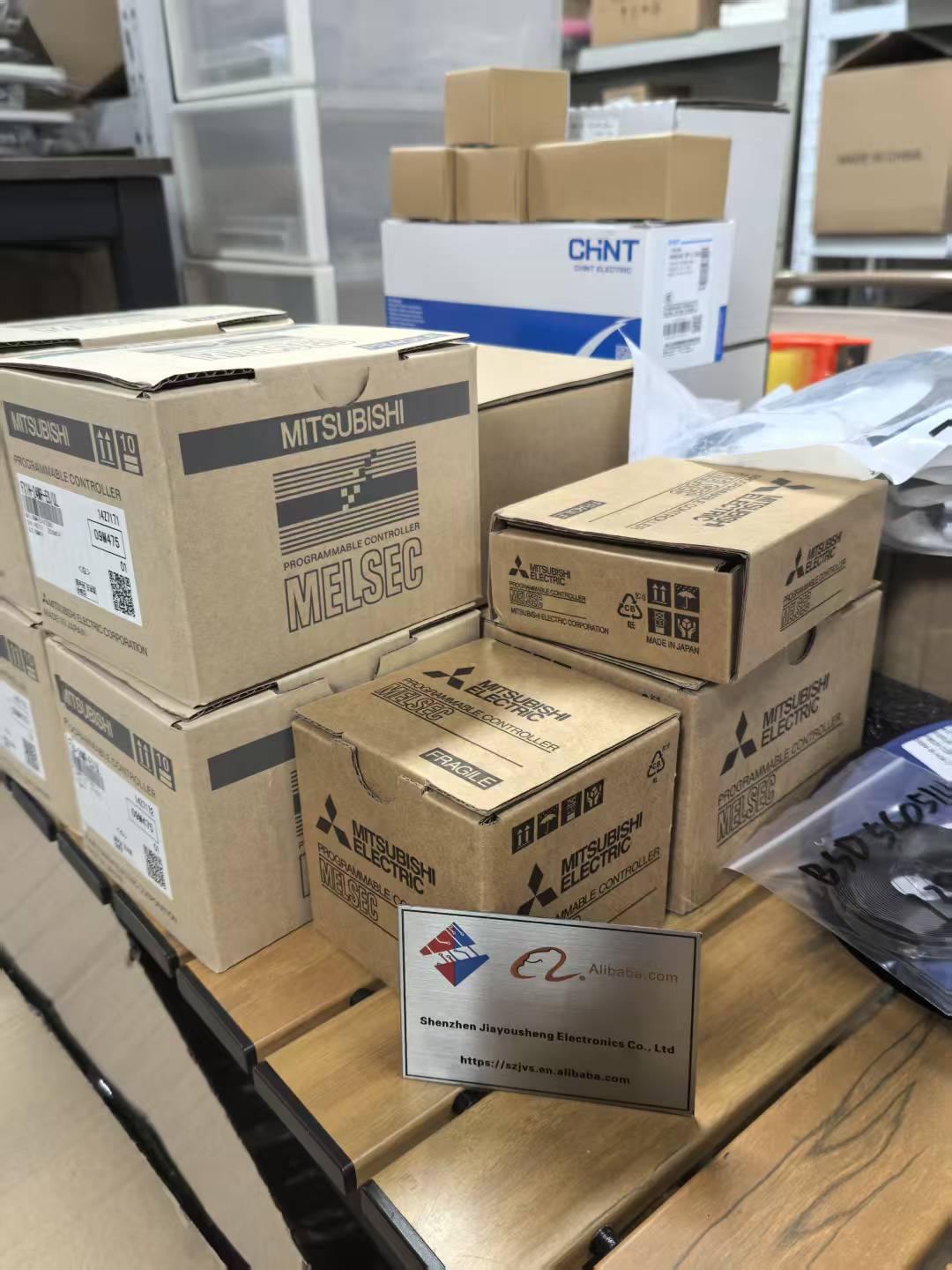Mimicking the Brain to Revolutionize AI Hardware
1/15/2025 5:52:09 PM
As artificial intelligence (AI) demands exponential growth in computational power, traditional von Neumann architectures-with their rigid separation of processing and memory-are struggling to keep pace. Enter neuromorphic computing-a paradigm inspired by the human brain's parallel, energy-efficient information processing. By emulating neural networks at both the algorithmic and hardware levels, neuromorphic systems promise 1,000x faster inference and 10,000x lower energy consumption for AI tasks compared to conventional GPUs. This article explores how this brain-inspired technology is reshaping machine learning, its core enabling technologies, and the challenges shaping its journey from lab to market.
The Limitations of Traditional Computing for AI
Modern AI relies on deep neural networks (DNNs) with billions of parameters, such as GPT-4 and Stable Diffusion. These models thrive on parallel processing but are hamstrung by the von Neumann bottleneck:
Data Movement Overhead: 90% of energy in GPU-based systems is wasted moving data between processors and DRAM.
Sequential Bottlenecks: Matrix operations in DNNs require tens of trillions of floating-point operations (FLOPs), pushing silicon-based GPUs to their thermal and power limits.
1. Spiking Neural Networks (SNNs): The Algorithmic Foundation
SNNs mimic biological neurons by transmitting information through asynchronous spikes:
Event-Driven Processing: Neurons fire only when input signals exceed a threshold, reducing redundant computations. For image recognition, SNNs process only 1% of pixels in static scenes, compared to DNNs that analyze every pixel.
Learning Rules: STDP (spike-timing-dependent plasticity) adjusts synaptic weights based on the timing of pre- and post-synaptic spikes, enabling unsupervised learning similar to human neural adaptation.
Researchers at Heidelberg University demonstrated an SNN-based vision system that achieves 95% accuracy on the MNIST dataset with 100x fewer operations than a CNN, operating at just 10 μW-suitable for always-on edge devices.
2. Neuromorphic Hardware: From Silicon to Novel Devices
a. Digital Neuromorphic Chips
Intel's Loihi 2 is a leading example, with 1,024 neuromorphic cores simulating 1 million neurons. Unlike GPUs, Loihi processes spikes in parallel, achieving:
1,000x Faster Reinforcement Learning: Training a quadcopter to land on a moving platform in 200 ms, compared to 20 seconds on a GPU.
10x Lower Latency: Real-time object recognition in drones, with inference delays <1 μs-critical for autonomous systems.
b. Memristor-Based Analog Neuromorphic Systems
Memristors (memory + resistor), first demonstrated by HP Labs in 2008, act as artificial synapses by storing weight values in resistive states:
In-Memory Computation: A 2024 study in Nature Electronics showed a memristor crossbar array performing matrix-vector multiplication with 99.2% accuracy, using 100x less energy than digital ASICs.
Scalability: Crossbar arrays with 1 million memristors can be manufactured using standard CMOS processes, enabling compact AI accelerators for smartphones.
c. Photonic Neuromorphic Systems
Light-based solutions leverage parallelism and low latency of photons:
Silicon Photonics: Lightmatter's Envo chip uses photonic waveguides to simulate neural connections, achieving 8 TOPS/W (tera-operations per watt)-10x better than NVIDIA's H100 (0.3 TOPS/W).
Quantum-Dot Spiking Lasers: A team at MIT developed lasers that emit spikes at GHz rates, enabling ultrafast neuromorphic layers for real-time data streams like stock market analytics.
Transformative Applications
1. Edge AI: Always-On Intelligence Without Boundaries
Wearable Health Monitors: A neuromorphic chip from Prophesee detects atrial fibrillation in ECG signals with 98% accuracy, operating at 50 μW-powered by a coin cell for 365 days.
Industrial IoT Sensors: Bosch's neuromorphic condition monitor identifies bearing faults in wind turbines using acoustic spikes, reducing false alarms by 40% while running on harvested vibration energy.
2. Robotics: Real-World Adaptation at Machine Speed
Dexterous Manipulation: Sony's QRIO robot uses a neuromorphic vision processor to catch a moving ball with 20 ms reaction time, mimicking human reflexes.
Autonomous Vehicles: NVIDIA's Brain Chip project integrates neuromorphic layers for emergency braking, processing sudden obstacles (e.g., pedestrians) 5x faster than traditional ECU systems.
3. Drug Discovery and Neuroscience
Protein Folding Prediction: A neuromorphic system from DeepMind reduced AlphaFold's inference time by 70%, enabling real-time simulation of drug-target interactions.
Brain-Machine Interfaces: Neuralink's neuromorphic implant decodes neural spikes with 99.5% fidelity, translating brain signals into text at 100 words per minute-transforming life for paralyzed patients.
Challenges to Overcome
1. Algorithm-Hardware Co-Design Gap
SNN Toolchain Immaturity: Most AI developers lack experience with spike-based programming models, relying on DNN-to-SNN conversion tools that lose 15-20% accuracy.
Weight Precision Limits: Analog memristor systems suffer from resistance drift (±5% per hour), requiring frequent recalibration that adds latency.
2. Scalability and Manufacturing
Yield Challenges: Memristor crossbars larger than 10k×10k show 3% faulty cells on average, necessitating error-correcting codes that reduce efficiency.
Foundry Support: TSMC and Samsung are investing in neuromorphic process nodes (22nm and beyond), but commercial fabs still prioritize traditional logic/AI chips.
3. Benchmarking and Standards
Lack of Unified Metrics: Current benchmarks (e.g., MLPerf) focus on DNNs, failing to capture neuromorphic strengths in event-driven processing.
Interoperability Issues: Spiking neural networks from different vendors use incompatible spike formats, hindering ecosystem growth.
Future Outlook: The Brain-Computer Convergence
By 2030, the neuromorphic computing market is projected to reach $45 billion, driven by 40% CAGR in edge AI and robotics:
Hybrid Architectures: Most systems will combine neuromorphic cores with traditional CPUs/GPUs, using SNNs for preprocessing and DNNs for complex reasoning-seen in Apple's upcoming A18 Bionic, which integrates a dedicated neuromorphic engine.
Quantum-Neuromorphic Synergy: IBM's quantum neuromorphic chip prototype uses qubit entanglement to enhance spike correlation, achieving 30% higher pattern recognition accuracy in noisy environments.
Biological Emulation: The Human Brain Project aims to simulate 1% of the brain (10^9 neurons) by 2028 using neuromorphic supercomputers, unlocking insights into consciousness and neurodegenerative diseases.
Neuromorphic computing is not just a technological evolution; it's a philosophical shift in how we design intelligent systems. By bridging the gap between silicon and biology, it promises to democratize AI-bringing powerful, energy-efficient intelligence to every edge device, from smartwatches to industrial robots. While challenges remain, the fusion of neuroscience, materials science, and computer engineering is creating a future where machines don't just compute-they perceive, learn, and adapt like the human brain.
The Limitations of Traditional Computing for AI
Modern AI relies on deep neural networks (DNNs) with billions of parameters, such as GPT-4 and Stable Diffusion. These models thrive on parallel processing but are hamstrung by the von Neumann bottleneck:
Data Movement Overhead: 90% of energy in GPU-based systems is wasted moving data between processors and DRAM.
Sequential Bottlenecks: Matrix operations in DNNs require tens of trillions of floating-point operations (FLOPs), pushing silicon-based GPUs to their thermal and power limits.
The human brain, in contrast, achieves complex pattern recognition with just 20W of power, thanks to spiking neural networks (SNNs)-a biological-inspired framework where information is encoded in the timing of neuron spikes (action potentials) rather than continuous numerical values. Neuromorphic computing seeks to replicate this efficiency through specialized hardware that natively supports SNNs.

1. Spiking Neural Networks (SNNs): The Algorithmic Foundation
SNNs mimic biological neurons by transmitting information through asynchronous spikes:
Event-Driven Processing: Neurons fire only when input signals exceed a threshold, reducing redundant computations. For image recognition, SNNs process only 1% of pixels in static scenes, compared to DNNs that analyze every pixel.
Learning Rules: STDP (spike-timing-dependent plasticity) adjusts synaptic weights based on the timing of pre- and post-synaptic spikes, enabling unsupervised learning similar to human neural adaptation.
Researchers at Heidelberg University demonstrated an SNN-based vision system that achieves 95% accuracy on the MNIST dataset with 100x fewer operations than a CNN, operating at just 10 μW-suitable for always-on edge devices.
2. Neuromorphic Hardware: From Silicon to Novel Devices
a. Digital Neuromorphic Chips
Intel's Loihi 2 is a leading example, with 1,024 neuromorphic cores simulating 1 million neurons. Unlike GPUs, Loihi processes spikes in parallel, achieving:
1,000x Faster Reinforcement Learning: Training a quadcopter to land on a moving platform in 200 ms, compared to 20 seconds on a GPU.
10x Lower Latency: Real-time object recognition in drones, with inference delays <1 μs-critical for autonomous systems.
b. Memristor-Based Analog Neuromorphic Systems
Memristors (memory + resistor), first demonstrated by HP Labs in 2008, act as artificial synapses by storing weight values in resistive states:
In-Memory Computation: A 2024 study in Nature Electronics showed a memristor crossbar array performing matrix-vector multiplication with 99.2% accuracy, using 100x less energy than digital ASICs.
Scalability: Crossbar arrays with 1 million memristors can be manufactured using standard CMOS processes, enabling compact AI accelerators for smartphones.
c. Photonic Neuromorphic Systems
Light-based solutions leverage parallelism and low latency of photons:
Silicon Photonics: Lightmatter's Envo chip uses photonic waveguides to simulate neural connections, achieving 8 TOPS/W (tera-operations per watt)-10x better than NVIDIA's H100 (0.3 TOPS/W).
Quantum-Dot Spiking Lasers: A team at MIT developed lasers that emit spikes at GHz rates, enabling ultrafast neuromorphic layers for real-time data streams like stock market analytics.
Transformative Applications
1. Edge AI: Always-On Intelligence Without Boundaries
Wearable Health Monitors: A neuromorphic chip from Prophesee detects atrial fibrillation in ECG signals with 98% accuracy, operating at 50 μW-powered by a coin cell for 365 days.
Industrial IoT Sensors: Bosch's neuromorphic condition monitor identifies bearing faults in wind turbines using acoustic spikes, reducing false alarms by 40% while running on harvested vibration energy.
2. Robotics: Real-World Adaptation at Machine Speed
Dexterous Manipulation: Sony's QRIO robot uses a neuromorphic vision processor to catch a moving ball with 20 ms reaction time, mimicking human reflexes.
Autonomous Vehicles: NVIDIA's Brain Chip project integrates neuromorphic layers for emergency braking, processing sudden obstacles (e.g., pedestrians) 5x faster than traditional ECU systems.
3. Drug Discovery and Neuroscience
Protein Folding Prediction: A neuromorphic system from DeepMind reduced AlphaFold's inference time by 70%, enabling real-time simulation of drug-target interactions.
Brain-Machine Interfaces: Neuralink's neuromorphic implant decodes neural spikes with 99.5% fidelity, translating brain signals into text at 100 words per minute-transforming life for paralyzed patients.
Challenges to Overcome
1. Algorithm-Hardware Co-Design Gap
SNN Toolchain Immaturity: Most AI developers lack experience with spike-based programming models, relying on DNN-to-SNN conversion tools that lose 15-20% accuracy.
Weight Precision Limits: Analog memristor systems suffer from resistance drift (±5% per hour), requiring frequent recalibration that adds latency.
2. Scalability and Manufacturing
Yield Challenges: Memristor crossbars larger than 10k×10k show 3% faulty cells on average, necessitating error-correcting codes that reduce efficiency.
Foundry Support: TSMC and Samsung are investing in neuromorphic process nodes (22nm and beyond), but commercial fabs still prioritize traditional logic/AI chips.
3. Benchmarking and Standards
Lack of Unified Metrics: Current benchmarks (e.g., MLPerf) focus on DNNs, failing to capture neuromorphic strengths in event-driven processing.
Interoperability Issues: Spiking neural networks from different vendors use incompatible spike formats, hindering ecosystem growth.
Future Outlook: The Brain-Computer Convergence
By 2030, the neuromorphic computing market is projected to reach $45 billion, driven by 40% CAGR in edge AI and robotics:
Hybrid Architectures: Most systems will combine neuromorphic cores with traditional CPUs/GPUs, using SNNs for preprocessing and DNNs for complex reasoning-seen in Apple's upcoming A18 Bionic, which integrates a dedicated neuromorphic engine.
Quantum-Neuromorphic Synergy: IBM's quantum neuromorphic chip prototype uses qubit entanglement to enhance spike correlation, achieving 30% higher pattern recognition accuracy in noisy environments.
Biological Emulation: The Human Brain Project aims to simulate 1% of the brain (10^9 neurons) by 2028 using neuromorphic supercomputers, unlocking insights into consciousness and neurodegenerative diseases.
Neuromorphic computing is not just a technological evolution; it's a philosophical shift in how we design intelligent systems. By bridging the gap between silicon and biology, it promises to democratize AI-bringing powerful, energy-efficient intelligence to every edge device, from smartwatches to industrial robots. While challenges remain, the fusion of neuroscience, materials science, and computer engineering is creating a future where machines don't just compute-they perceive, learn, and adapt like the human brain.







